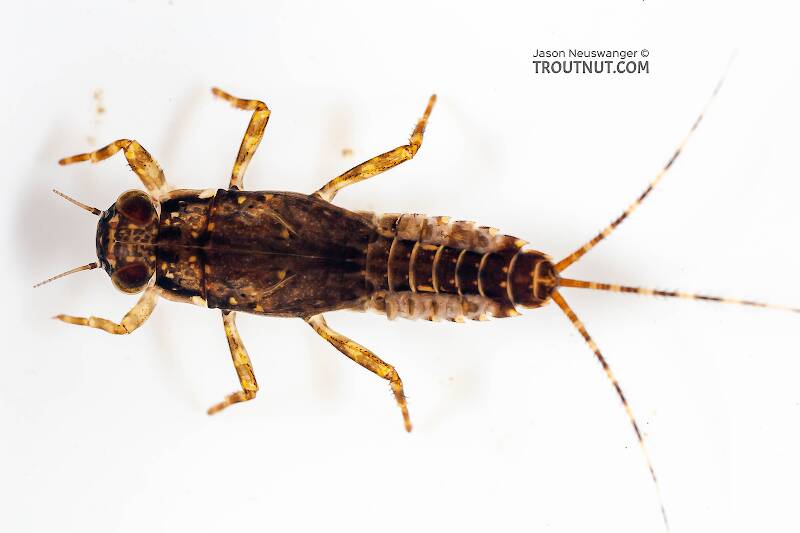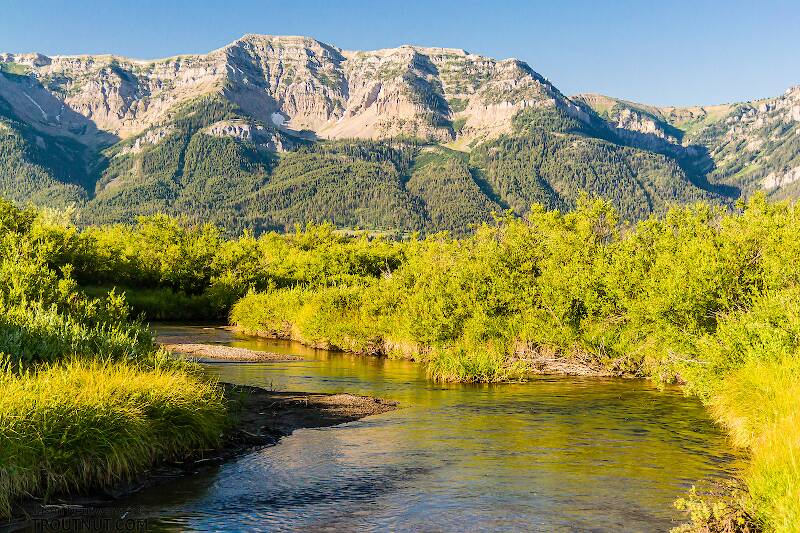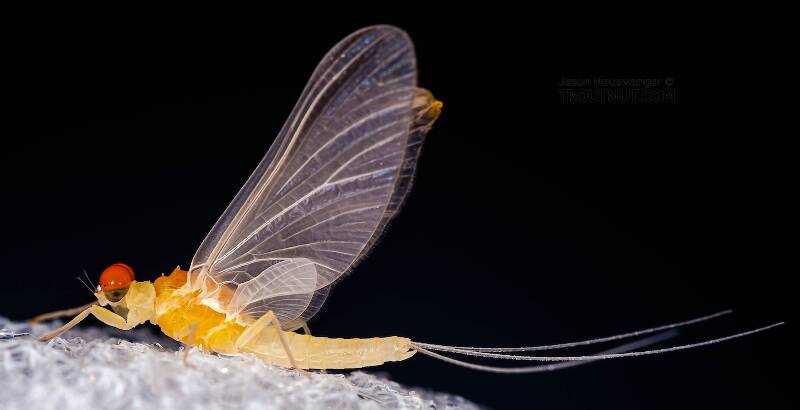
Blue-winged Olives
Baetis
Tiny Baetis mayflies are perhaps the most commonly encountered and imitated by anglers on all American trout streams due to their great abundance, widespread distribution, and trout-friendly emergence habits.

Mayfly Species Ephemerella dorothea dorothea (Pale Evening Duns)
This is one of the most challenging mayfly hatches on Eastern waters. On many streams, it follows or overlaps hatches of the larger, lingering Ephemerella invaria.
Where & when
Time of year : May-July, often best in June.
Preferred waters: Perhaps most common in mountain streams, but especially good in some alkaline spring creeks.
In 16 records from GBIF, adults of this species have been collected during June (31%), July (25%), May (13%), October (13%), April (6%), September (6%), and February (6%).
In 2 records from GBIF, this species has been collected at elevations of 200 and 341 ft.
Species Range
Hatching behavior
These insects are actually too perfect for dry fly fishing, which makes matching their hatches difficult.The nymphs may drift for a while just below the surface before trying to break through. When they do, it takes them a long time to crawl out of their shucks. After that, they ride the water for an exceptionally long time to dry their wings, and low-floating patterns like the Comparaduns are preferred. And as if that weren't enough, they are also one of the most cripple-prone of all mayfly species, and trout may feed selectively on their cripples and stillborns. This may all take place at the same time as the spinner fall, especially in the East.
These Sulphurs emerge from smooth, slow water, which allows the trout maximum time to inspect their prey. Because a rising trout may be selective to either floating nymphs, emergers, duns, cripples, or spinners, this is one of the most puzzling hatches in all fly fishing. It is also difficult because the flies are small, hook size 16 to 18, and such small imitations are prone to microdrag. There is no better time to hone your powers of observation and presentation.
Spinner behavior
Time of day: Near dusk
Habitat: Riffles are preferred, but on spring creeks without riffles any broken water will do.
Females usually, but not always, drop their eggs from the air above the stream. When they do end up on the water with egg sacs still attached, trout may become selective to spinners with little yellow dots near the tail. Patterns are sold to imitate this.
Nymph biology
Current speed: Some in riffles and runs, but best in slower stream sections and pools.
Substrate: Gravel, sand, vegetation
Ephemerella dorothea dorothea Fly Fishing Tips
See the section on Hatching Behavior above regarding the many challenges this hatch poses. The best approach is extremely keen observation, and the standby is rapid-fire trial and error. Do not stick with one thing for very long if it's not working.Caucci and Nastasi note in Hatches II that some light-bodied species of Epeorus, such as Epeorus vitreus, may emerge at the same time as dorothea in the East. It's just one more entry in the long list of complications of the dorothea Sulphurs.
Physical description
Most physical descriptions on Troutnut are direct or slightly edited quotes from the original scientific sources describing or updating the species, although there may be errors in copying them to this website. Such descriptions aren't always definitive, because species often turn out to be more variable than the original describers observed. In some cases, only a single specimen was described! However, they are useful starting points.
Male Spinner
Wing length: 7-8.5 mm
A small very pale species, of the Ephemerella invaria group; the second joint of the forceps enlarged distally; 12-14 spines on the penes.
Eyes of male bright red. Thorax and legs pale yellowish. Wings hyaline, iridescent, the venation wholly pale. Abdomen pale yellowish. Tails white, without dark markings. Genitalia yellowish, the second joint of the forceps enlarged distally. Spines on the penes number from 12 to 14, and are usually ventral and lateral in position (see fig. 152).
Female Spinner
Nymph
The small yellowish brown nymph is speckled with pale dots. The lateral extensions of the abdomen are poorly developed, the postero-lateral spines short except on segments 8 and 9. There are no dorsal spines on the abdomen. Claws are strongly curved; each bears 8-9 denticles. Tails pale, rather darker at the tips; may be faintly banded.
Specimens of the Mayfly Species Ephemerella dorothea dorothea
1 Male Dun
1 Nymph

Discussions of Ephemerella dorothea dorothea
Later in the evening I was bested by a half-dozen rising trout. The sulphurs were still emerging, and a mix of spinners was starting to appear on the water, but I didn't get so much as a splashy refusal from several rising fish, even in the low light of dusk. My best guess is that they were picky feeders keying on a stage of Ephemerella dorothea mayflies.
Start a Discussion of Ephemerella dorothea dorothea
References
- Arbona, Fred Jr. 1989. Mayflies, the Angler, and the Trout. Nick Lyons Books.
- Caucci, Al and Nastasi, Bob. 2004. Hatches II. The Lyons Press.
- Fauceglia, Ted. 2005. Mayflies . Stackpole Books.
- Knopp, Malcolm and Robert Cormier. 1997. Mayflies: An Angler's Study of Trout Water Ephemeroptera . The Lyons Press.
- Leonard, Justin W. and Fannie A. Leonard. 1962. Mayflies of Michigan Trout Streams. Cranbrook Institute of Science.
- Needham, James G., Jay R. Traver, and Yin-Chi Hsu. 1935. The Biology of Mayflies. Comstock Publishing Company, Inc.
- Schwiebert, Ernest G. 1955. Matching the Hatch. MacMillan Publishing Company.
- Swisher, Doug and Carl Richards. 2000. Selective Trout. The Lyons Press.
Mayfly Species Ephemerella dorothea dorothea (Pale Evening Duns)
Species Range
Common Names
Resources
- NatureServe
- Integrated Taxonomic Information System
- Global Biodiversity Information Facility
- Described by Needham (1908)



